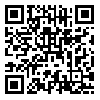BibTeX | RIS | EndNote | Medlars | ProCite | Reference Manager | RefWorks
Send citation to:
URL: http://hdq.uswr.ac.ir/article-1-134-en.html
2- Department of Health in Disasters and Emergencies, School of Health, Safety and Environment, Shahid Beheshti University of Medical Sciences, Tehran, Iran. , shyousefian@sbmu.ac.ir
Background: Many types of natural disasters are sudden and calamitous events that create a large socioeconomic burden with significant negative impact on health care, social infrastructure, and the environment; especially in the low and middle income countries; therefore, it is necessary to reduce or control this kind of disasters by understanding the specific risks and negative impacts. Recognition of disaster events helps us to plan effectively, coordinate and invest on disaster risk reduction projects.
Materials and Methods: The current article was a narrative review of the epidemiological data available on natural disasters in MNA countries (Egypt, Jordan, Lebanon, Morocco, Oman, Tunisia,and Yemen) and their trends from 1900 to 2015. The statistical data were obtained from international disaster sources (EM-DAT, DesInventar and Gapminder) and literature reviews of international reports and journals. To find related articles from journals, data bases such as Pubmed, Escopus, Google Scholar, and SID were searched for the following key words: natural disasters, Middle-East, disasters and Middle-East, disasters and North Africa, natural disasters and Middle-East, natural disasters and North Africa, and disaster and trend.
Results: In the last century, more than 80% of natural disaster events occurred in MNA and concentrated in just 9 countries as Afghanistan, Pakistan, Iran, Sudan, Somalia, Algeria, Morocco, Yemen, and Egypt. Hydrological disasters (flood and landslide) with 63% had the largest share in 2015 and were more than that of the last century. In 2015, mortality rate of flood with 11% and landslides with 32% had increasing trend compared to last century. In the last 2 years, conversely, damages and victims from flood were about 85%, which were more than those of the last century, but in landslides no change was observed. In 2015, meteorological disasters such as storms and extreme temperatures represented 19% of the total disaster occurrence that had an increasing trend compared to that of the last century with 12%. Extreme temperatures with 57% of all deaths and storm with 72% of total victims had the highest levels among other natural disasters in this period. In the previous years, the total number of death, affected people, and damages of metrological
disasters had increasing trend compared to the last century. In addition, in 2015, the frequency of climatological disasters (drought) and geophysical disasters (earthquake) did not change significantly, but the number of affected people, deaths, and damages from drought and earthquakes had a noticeable decrease compared to those of the last century.
Conclusion: The trends of natural disasters frequency from 1900 to 2015 in MNA has increased and effective mitigation and preparedness is necessary, both at individual and governance levels. This issue in the middle income and developing countries in MNA should be considered as a high priority in national planning.
Received: 2016/08/27 | Accepted: 2016/12/2 | Published: 2017/01/1
| Rights and permissions | |
 |
This work is licensed under a Creative Commons Attribution-NonCommercial 4.0 International License. |







